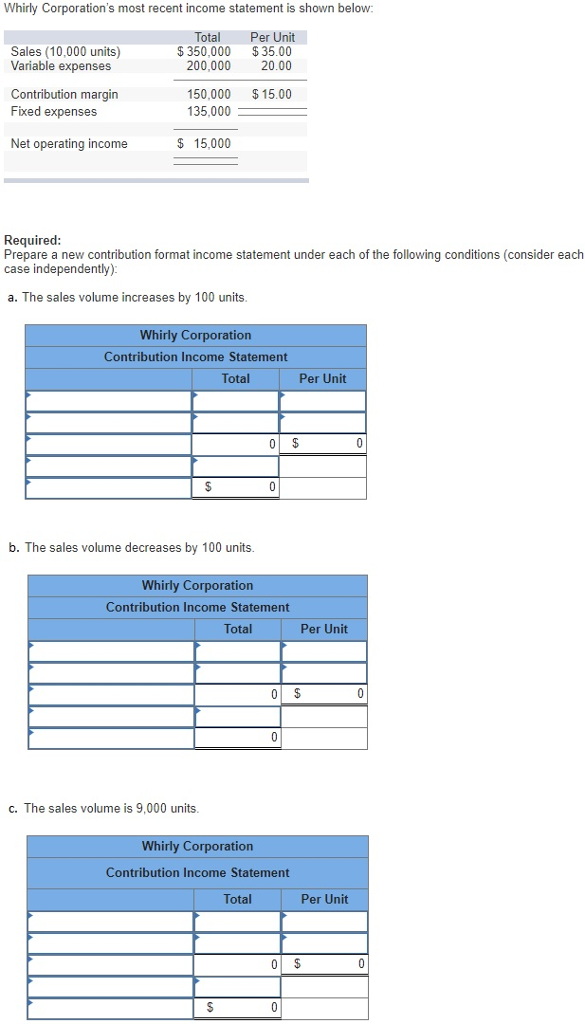
The calculator will not only calculate the margin itself but will also return the contribution margin ratio. The Contribution Margin Ratio is a measure of profitability that indicates how much each sales dollar contributes to covering fixed costs and producing profits. It is calculated by dividing the contribution margin per unit by the selling price per unit.
As an example, the data for sales staff in the East – Annie Adams, Charles Bell, Valerie Crew, and Scott Davis – follows. For instance, in Year 0, we use the following formula to arrive at a contribution margin of $60.00 per unit. One common misconception pertains to the difference between the CM and the gross margin (GM). If the contribution margin is too low, the current price point may need to be reconsidered.

Contribution margin calculation is one of the important methods to evaluate, manage, and plan your company’s profitability. Further, the contribution margin formula provides results that help you in taking short-term decisions. As a business owner, you need to understand certain fundamental financial ratios to manage your business efficiently. These core financial ratios include accounts receivable turnover ratio, debts to assets ratio, gross margin ratio, etc. It also helps a company identify the profitability or margin per product in a product.
To calculate contribution margin, a company can use total revenues that include service revenue when all variable costs are considered. For each type of service revenue, you can analyze service revenue minus variable costs relating to that type of service revenue to calculate the contribution margin for services in more detail. Gross margin is calculated before you deduct operating expenses shown in the income statement to reach operating income. Each profit measure can be expressed as total dollars or as a ratio that is a percentage of the total amount of revenue. The overall contribution margin is computed using total sales and service revenue minus total variable costs.
Investors and analysts would also keep an eye on the prime product line profitability of the business. Contribution margin offers a valuable starting point to a business in profitability analysis. The contribution margin is given as a currency, while the ratio is presented as a percentage. Below is a break down of subject weightings in the FMVA® financial analyst program. As you can see there is a heavy focus on financial modeling, finance, Excel, business valuation, budgeting/forecasting, PowerPoint presentations, accounting and business strategy. Thus, at the 5,000 unit level, there is a profit of $20,000 (2,000 units above break-even point x $10).
The following formula shows how to calculate contribution margin ratio. The contribution margin ratio (CMR) expresses the contribution margin as a percentage real estate of revenues. Finally, managers may use the elements of a variable costing income statement to compare planned to actual dollar amounts and units sold.
While the average margin for different industries varies widely, businesses can gain a competitive advantage in general by increasing sales or reducing expenses—or both. The net margin considers the net profits generated from all segments of a business, accounting for all costs and accounting items incurred, including taxes and depreciation. It comes as close as possible to summing up in a single figure how effectively the managers are running a business.
That is it does not include any deductions like sales return and allowances. Thus, the total variable cost of producing 1 packet of whole wheat bread is as follows. A higher operating margin is also a good indication of efficient operations of the business. However, it may also increase by controlling non-operating expenses and improving pricing. It takes the concept of contribution margin to the next step by deducting some non-operating expenses. Therefore, it offers a refined profit margin indicator as compared to the contribution margin.
All you have to do is multiply both the selling price per unit and the variable costs per unit by the number of units you sell, and then subtract the total variable costs from the total selling revenue. The break even point (BEP) is the number of units at which total revenue (selling price per unit) equals total cost (fixed costs + variable cost). If the selling price per unit is more than the variable cost, it will be a profitable venture otherwise it will result in loss. This demonstrates that, for every Cardinal model they sell, they will have \(\$60\) to contribute toward covering fixed costs and, if there is any left, toward profit. Every product that a company manufactures or every service a company provides will have a unique contribution margin per unit.